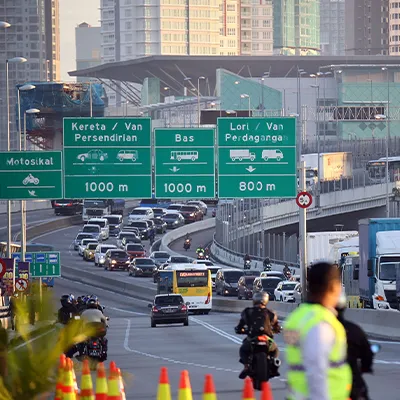Singapore’s well-developed maritime and air freight industries – with Tuas port connected to over 600 ports all over the world, and Changi Airport with access to over 100 air routes – has made it one of the world’ most connected economies.
It has also signed 27 free-trade agreements with major economies such as the United States, the United Kingdom, and China, boasting access to 80 per cent of the world’s GDP.
Singapore is also a member of the Regional Comprehensive Economic Partnership (RCEP) agreement, which came into effect in January 2022. China, the 10 Southeast Asian nations (Asean), as well as Japan and South Korea are part of this agreement.
From a macro perspective, Southeast Asia is a prime location for manufacturers. This is due to the region’s low labour costs, highly-skilled workforce, and a consumer market that is 650-million strong. Businesses can also tap on the Southeast Asia Manufacturing Alliance (SMA), a joint partnership between EDB, Enterprise Singapore, and strategic partners in the private sector. The alliance will help companies planning to use the “Singapore+” (SG+) strategy to expand to Southeast Asia.
“Singapore is uniquely placed as a gateway to the Southeast Asian market,” said Ms Poh.
“Establishing themselves both in Singapore and a country that’s nearby is a win-win strategy most companies can adopt to strengthen regional operations and increase the resilience of their supply chains,” she added.
Hub for talent and R&D
Lingyi iTech, an original design manufacturer (ODM) from China, is another company that has adopted the “SG+” model.
In 2018, Lingyi iTech evolved from an original equipment manufacturer (OEM) that only did subcontracted manufacturing for other companies, to becoming a joint design manufacturer (JDM), and finally into an ODM. It has developed a new model of “independent R&D, design, and production”, a transformation that has a lot to do with Singapore.
“The company’s upgrade means that the capability of its core team has expanded and improved. Acquiring world-class talent in technical and management roles has therefore become our top priority,” said Lingyi iTech’s Chief Technology Officer and Vice-President Choy Chee-Mun.
“Singapore, a hub for outstanding international talent, is the natural choice for Lingyi iTech’s overseas headquarters and R&D centre.”
He added that Lingyi iTech would invest in and manage its businesses in India, Vietnam, Europe, and the United States through its Singapore headquarters, and also use its base in the Republic to develop talent for its overseas locations. In terms of R&D, Lingyi iTech will focus on working with the Agency for Science, Technology and Research (A*STAR) to develop new materials, while also basing its patent management centre in Singapore.
Mr Choy, who was born and raised in Singapore, used to be a senior scientist at the Singapore Institute of Manufacturing Technology (SIMTech) .
“In the face of globalisation, the single-market business model has become unsustainable. A complete and healthy business operation requires a capable internationalised team, R&D, and competent management,” he said.
This article was adapted from a content series produced by Singapore Chinese-language media organisation Lianhe Zaobao, that spotlights how businesses can tap on opportunities across Southeast Asia and serve global markets, from Singapore.







